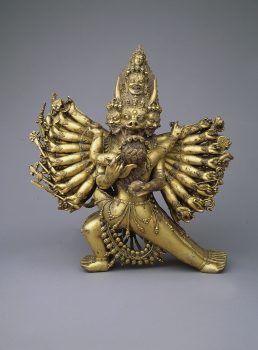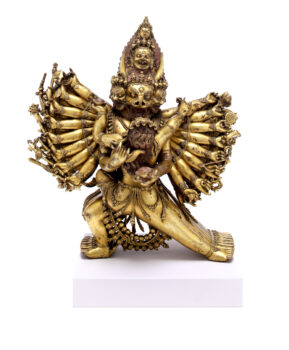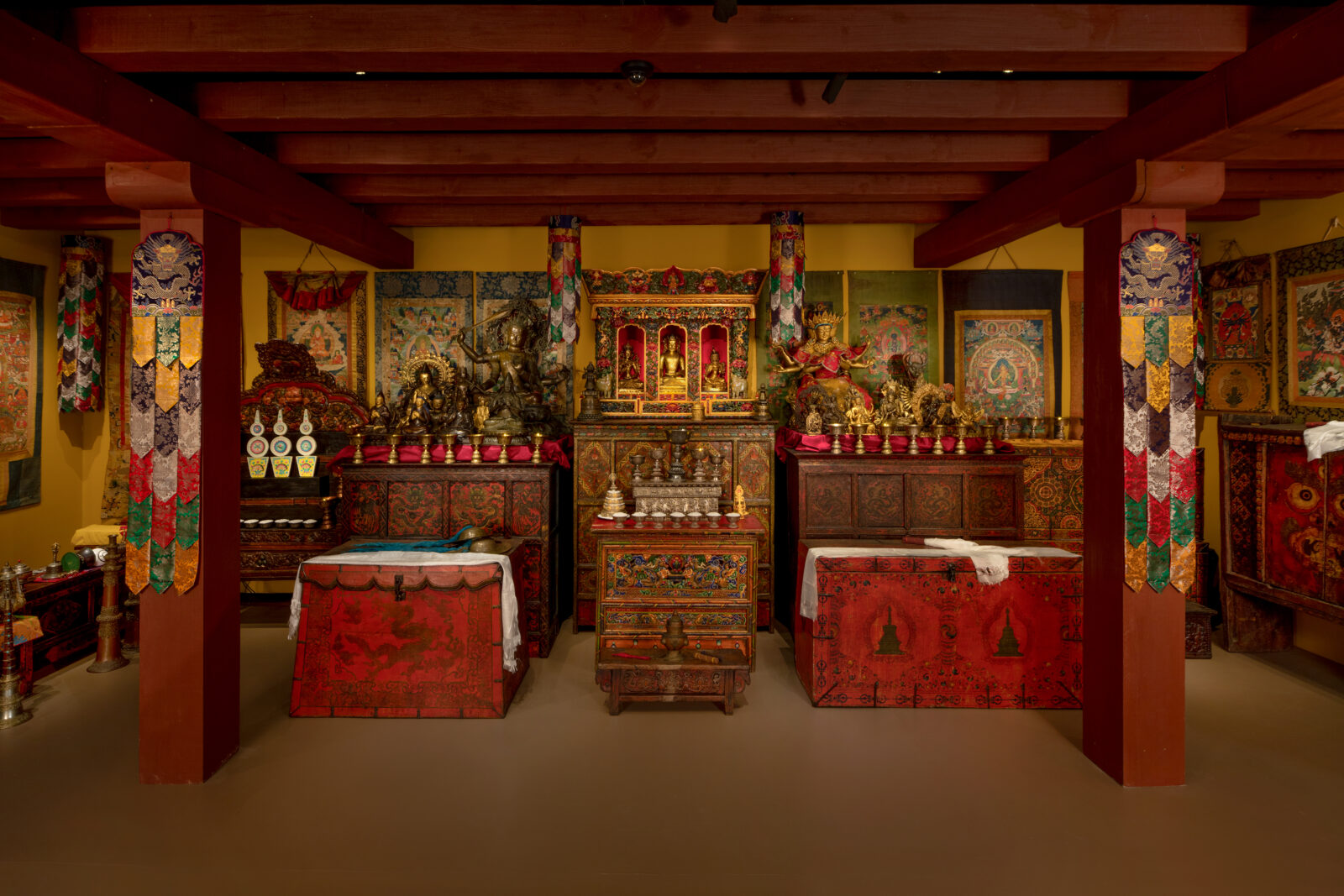Mongolia
18th - 19th century
A vajra is a ritual scepter used in tantric practices and an attribute of tantric masters and deities. It generally symbolizes method, the male aspect of enlightenment.
Mongolia
18th - 19th century


Vajrabhairava is a prominent deity in the Sakya and Gelug Tibetan Buddhist traditions. He is considered to be the wrathful emanation of the Bodhisattva of Wisdom, Manjushri. He took on this form by reflecting back the terrifying nature of the Lord of Death, Yama, thus overwhelming and subduing Yama, who became a protector of the Buddhist faith. In Vajrabhairava, Yama’s form, with a buffalo head and thirty-four hands wielding different implements, is topped by the head of Manjushri, signifying the deity’s true nature.

Photo by Dave de Armas
A religious movement that originated in India around the fifth to seventh century with sacred writings and esoteric teachings and practices transmitted from teacher to student through initiation. These remain an important part of Hinduism and Buddhism today.
The end of this life marked by the cessation of bodily functions followed by decay. According to Buddhism, after death consciousness transitions to an intermediate state known as the bardo before embarking on another life.
A meditation technique primarily used in tantric practice that involves imagining a deity in one’s mind or imagining oneself becoming a deity and carrying out various activities. Such techniques are intended to help a practitioner transform ordinary perception and achieve enlightened qualities.
Protectors of Buddhist teachings who destroy obstacles that impede the path to enlightenment. The more frightening and gruesome their appearance, the greater their power.
Mongolians have been widely active in the Tibetan Buddhist world, playing a key role in Tibetan culture, politics, and relations with China. In the 13th century, the Mongol Empire—the largest contiguous empire in world history—facilitated the spread of Tibetan visual culture.
Get the latest news and stories from the Rubin, plus occasional information on how to support our work.